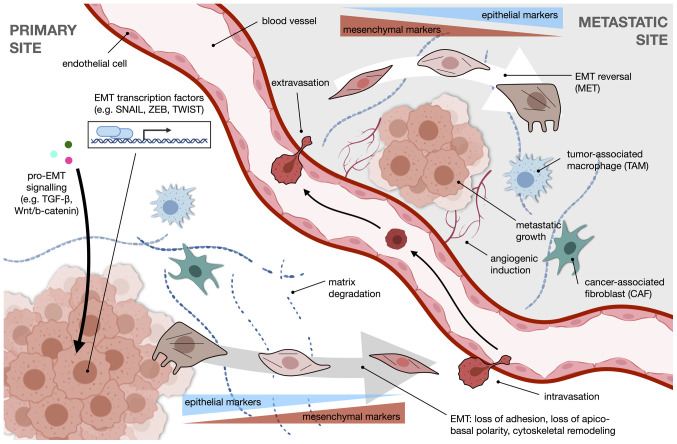Figure 1.
An overview of EMT and the metastatic process. Transcriptional reprogramming during EMT, a core component of the metastatic cascade, is driven by pro-EMT signaling pathways, such as TGF-β and Wnt/β-catenin, and EMT transcription factors of the SNAIL, ZEB, and TWIST families, among others. The resulting physical changes help cells assume a motile phenotype. This shift is accompanied by the downregulation of epithelial markers and the upregulation of mesenchymal markers, as well as an enhanced capability for degradation of the extracellular matrix. The primed metastatic cell intravasates and travels through the circulation to the distant metastatic site, where it extravasates and undergoes EMT reversal, or MET. Angiogenic induction is crucial for establishing metastasis. Stromal cells in the TME, such as TAMs and CAFs, modulate EMT and help sculpt the metastatic niche. EMT, epithelial-mesenchymal transition; TGF-β, transforming growth factor β; ZEB, Zinc finger E-box-binding homeobox; MET, mesenchymal-epithelial transition; TAMs, tumor-associated macrophages; CAFs, cancer-associated fibroblasts.

